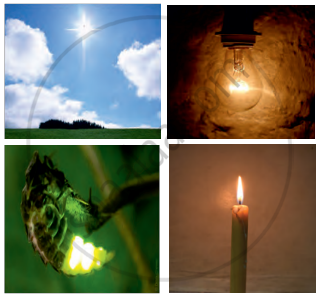Topics
Matter
Physical Quantities and Measurement
- Measurements
- Unit and Its Types
- Unit Systems
- Physical Quantities
- Rules and Conventions for Writing SI Units and Their Symbols
- International System of Units (Si System)
- Unit Prefixes
- Measurement of Length
- Devices for Measuring Length
- Measurement of Mass
- Devices for Measuring Mass
- Measurement of Time
- Devices for Measuring Time
- The Temperature and a Thermometer
- Measuring Temperature
- Area and It’s Unit
- Measurement of Area
Force
- Force - Push or Pull
- Effect of Force
- Types of Force: Contact Force
- Types of Force: Non-Contact Force
- Force of Friction
- Effects of Friction
- Kinds of Friction
- Advantages and Disadvantage of Friction
- Increasing and Reducing Friction
Energy
- Concept of Work
- Energy
- Machines
- Principle of Machine
- Efficiency of a Machine
- Simple Machines
- Mechanical Advantage
- A Lever
- Types of Levers
- A Pulley
- A Wheel and Axle
- An Inclined Plane
- A Wedge
- Screw
- Care of Machines
- Machines (Numerical)
Light
Magnetism
- Discovery of Magnets
- Classification of Magnets
- Magnetic and Non-magnetic Materials
- Magnet
- Magnetic Properties
- Magnetic Field
- Earth’s Magnetism
- Making a Magnet
- Electromagnet
- Making of an Electromagnet
- Applications of Electromagnets
- Care and Storage of Magnets
- Demagnetization of a Magnet
Sources of Light:
Sources of light are objects that emit light, allowing visibility of both the light-emitting object itself and the surrounding environment. These sources can either be natural or artificial.
- Natural Sources of Light: Natural sources of light are those that appear in nature and are not man-made. The sun is the main natural source of light during the daytime. It helps in lighting up the earth. Other stars that we see in the night sky also emit light, just like the Sun. Some animals and plants can also produce light naturally, a process called bioluminescence. For example, fireflies, anglerfish, honey mushrooms, etc.
- Artificial Sources of Light: Artificial sources of light are man-made objects designed to emit light in the absence of natural light. For example, electric bulbs, torchlight, tubelight, LED, etc.

Sources of light
If you would like to contribute notes or other learning material, please submit them using the button below.
Related QuestionsVIEW ALL [16]
Write the items given here in the correct column
(Stars, brick walls, plants, mirror, planets, electric light bulb,candle)
| Sources of Light | Objects that reflect light |
